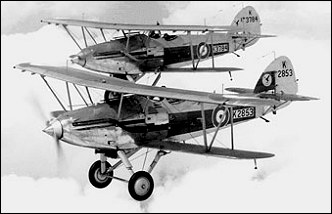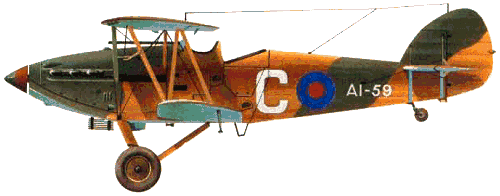 |
Hawker Demon1933 |  |
| FIGHTER | Virtual Aircraft Museum / United Kingdom / Hawker |
 |
When the Hawker Hart day bomber entered service in January 1930, its performance was so outstanding that it was then, in terms of speed, able to outfly all other aircraft in RAF service. Procurement of fighters with even better performance was following the RAF's between-wars pattern of 'slow-but-sure', but it seemed sensible to the decision makers to put into service a two-seat fighter version of the Hart. This might have marginally better performance than the bomber, and would certainly provide addi-tional fire-power from the rear cockpit. Accordingly two prototypes were prepared for evaluation by modification of Hart bombers. These were each powered by a 417kW fully supercharged Rolls-Royce Kestrel engine. Each was equipped with two synchronised forward-firing Vickers machine-guns and had the coaming of the rear cockpit modified to provide a maximum field of fire for the Lewis gun operated by the observer/air gunner. Known as Hart Fighters, these were evaluated and a small batch of six was ordered. In 1932 the fighter received the name Demon. A total of 305 Demons were built, made up of the prototypes/pre-production aircraft, 77 with Kestrel IIS engines (seven as instructional airframes and one fitted with a 477kW Kestrel VI engine under the Hawker report number 475), 155 with 436kW Kestrel VI engines and those for Australia. From late 1936 aircraft coming from the Boulton Paul production line were equipped with a hydraulically operated shield in the aft cockpit and were known as Turret Demons. The segmented metal shield was provided to give the gunner some protection from the slipstream. Many earlier aircraft were modified retrospectively to this standard. In addition to aircraft supplied to the RAF, a total of 64 were produced for the Royal Australian Air Force which procured them as army co-operation fighters each fitted with bomb racks, a message-retrieving hook and other equipment. As a fighter with the RAF the Demon was finally superseded from late 1938 by the Blenheim IF, but a few were used as target tugs until replaced by the Hawker Henley.

|  COMPANY PROFILE | ||||||||||
 |

|

